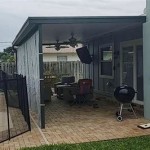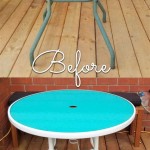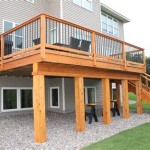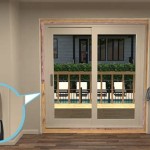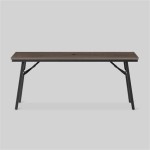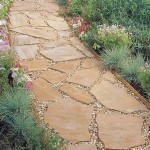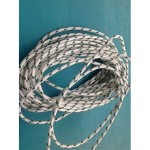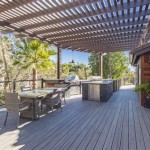Patio Wall Cinder Blocks: Essential Aspects You Need to Know
Patio wall cinder blocks, also known as concrete masonry units (CMUs), are versatile building materials that offer durability, affordability, and aesthetic appeal for outdoor spaces. Understanding their essential aspects is crucial for successful patio wall construction and maintenance. Here's a comprehensive guide to patio wall cinder blocks.
Composition and Types
Cinder blocks are primarily composed of a mixture of concrete, fly ash, and aggregates. They come in various types, including solid, hollow core, and perforated blocks. Solid blocks are the most durable and commonly used for structural applications, while hollow core and perforated blocks provide insulation and weight reduction.
Advantages
Patio wall cinder blocks offer several advantages, including:
- Durability and Strength: Cinder blocks are highly durable, resistant to moisture, insects, and weather conditions, ensuring long-lasting patio walls.
- Affordability: Compared to other wall materials, cinder blocks are more cost-effective, making them a practical choice for large-scale projects.
- Versatility: Cinder blocks can be used in various wall designs, from straight walls to curved or angled structures, allowing for customization.
- Low Maintenance: Cinder block walls require minimal maintenance and can be easily cleaned with water or pressure washing.
Installation Considerations
Proper installation is crucial for the longevity and stability of patio wall cinder blocks. Key considerations include:
- Foundation: A solid foundation is essential to support the weight of the wall. Ensure a well-compacted base layer and consider using a concrete footing for added support.
- Mortar: Choose a suitable mortar mix designed for cinder blocks, typically Type N or Type S mortar, to ensure proper bonding.
- Laying Technique: Follow the manufacturer's instructions for laying cinder blocks to maintain alignment and level. Stagger the blocks and use mortar spacers for consistent joints.
- Reinforcement: For taller walls or in areas with strong winds, consider using reinforcing bars or wire mesh within the mortar joints to enhance structural integrity.
Finishing Options
Various finishing options are available to enhance the appearance and functionality of patio wall cinder blocks:
- Paint or Stain: Apply paint or stain to customize the color and texture of the cinder block wall, adding aesthetic appeal to your patio.
- Facade Materials: Cover the cinder block wall with facade materials such as stone veneer, brick, or stucco to create a more sophisticated or traditional look.
- Capstones: Top the wall with capstones to prevent water damage, enhance aesthetics, and provide a finished appearance.
Conclusion
Patio wall cinder blocks offer a practical and versatile solution for constructing durable and attractive outdoor spaces. Understanding their essential aspects, including composition, advantages, installation considerations, and finishing options, is key to successful project planning and execution. By selecting the right type of cinder blocks, following proper installation techniques, and choosing suitable finishing options, you can create a low-maintenance, long-lasting patio wall that complements the design of your outdoor living area.

Make A Cinderblock Wall Planter Digging

How To Build A Cinder Block Garden Wall With Justin Kasulka

A Diy Cinder Block Retaining Wall Project Decoist

Yes We Paint Block Walls Too Cinder Garden Wall

Cinder Block Wall Ideas Concrete Retaining Landscaping Walls Sloped Backyard Garden

Planning And Building A Concrete Block Retaining Wall

Concrete Block Sitting Wall Idea Gallery Sacramento Ca
:strip_icc()/102540132-967f759f9889485c867e94c671dd7bc0.jpg?strip=all)
How To Work With Concrete Block

6 In X 16 Concrete Garden Wall Blocks M0616mano001 The Home Depot

Retaining Wall Blocks Landscaping Network

